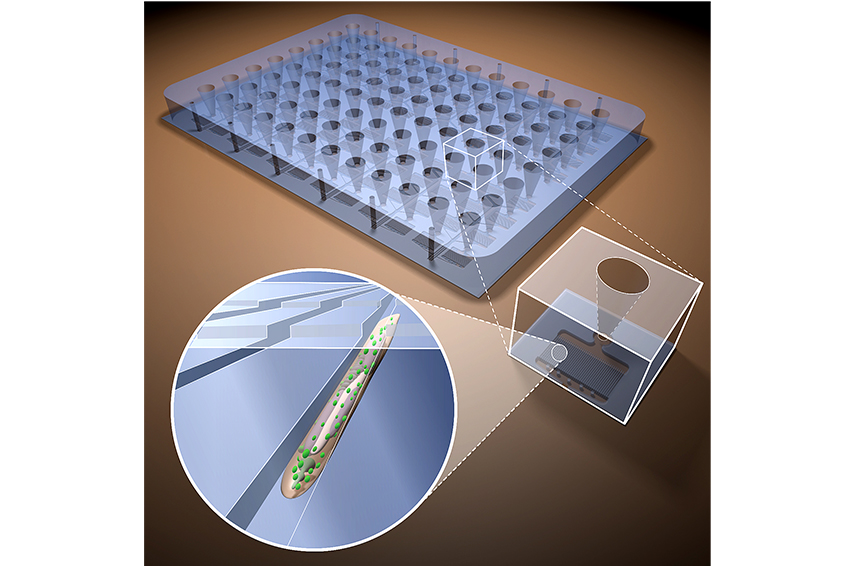UT researchers recently developed a device that makes it easier to study living Caenorhabditis elegans roundworms.
Earlier this month, Adela Ben-Yakar, professor of biomedical engineering and Sudip Mondal, a mechanical engineering postdoctoral researcher, invented a chip that allows researchers to perform high-resolution and wide-scale studies. The goal of these studies is to examine how effective large quantities of various drugs are at treating neurodegenerative diseases.
Roundworms, which are less than a millimeter long, have been used to research neurodegenerative diseases for decades because they have many genes with the same sequence and functionality as humans. In order for researchers to obtain a clear picture of the roundworms during a study, the worms must stay extremely still.
“Imagine that someone is moving and you are trying to take a picture of them, you tell them not to move,” Ben-Yakar said. “That’s what the device does, it immobilizes the animal.”
The chip is about an inch long, roughly the size of a cellphone’s computer chip, and allows researchers to analyze thousands of roundworms at once.
“Using the chip, we can immobilize 3,840 [roundworms] simultaneously,” Mondal said.
The chip forces the roundworms into tubes where they cannot move horizontally.
Standard methods of roundworm analysis require anesthetics in order to immobilize the worms, and they do not allow researchers to examine large quantities of worms and drugs at once.
“Conventionally [studying roundworms] is done with anesthetics, but this device immobilizes them without using an anesthetic and then you can take a picture of their nervous system cells,” Ben-Yakar said.
The team also developed a software that can analyze pictures taken while the roundworms are under a microscope.
“You put the chip on the microscope, and use the software we developed to take high-resolution images of the worms and another [program] to analyze the images,” Ben-Yakar said.
The team used a green fluorescent protein, to mark which proteins get expressed in the different neurological diseases, Mondal said. According to Mondal, when the marked proteins of the disease multiply, the green color can be seen and the researchers can monitor how the disease spreads.
“We identified which drug compounds could reduce the number of these green blobs,” Mondal said.
Mondal said that the team screened roughly 1,000 FDA-approved drug compounds and found four critical compounds, one of which has the potential to treat Huntington’s disease.
Effects of the drugs can differ from roundworms to humans, Mondal said.
“The chip performs single-cell studies, but in a human the drugs will need to work across multiple cells,” Mondal said. “These studies offer complementary information for single-cell studies before one goes into whole organism studies using mice and monkeys.”
Ben-Yakar said she and her team have founded a company called Newormics, which they hope to use to further develop the chip by increasing its capacity to hold worms, expanding analysis speed and making it more cost-friendly for mass production.















